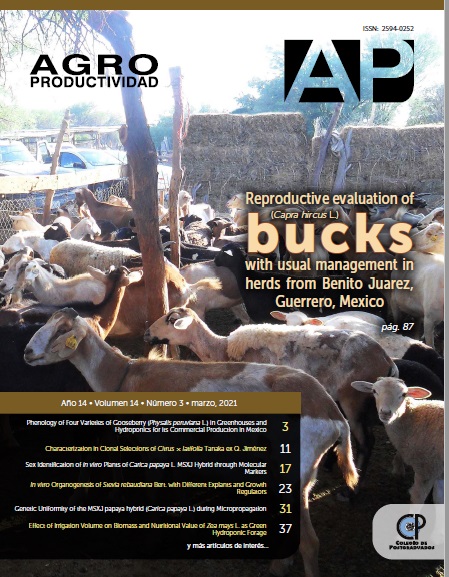Characterization in Clonal Selections of Citrus X latifolia Tanaka ex Q. Jiménez Español
Main Article Content
Keywords
Abstract
Abstract
Objective: To physically and chemically characterize clonal selections with Persian lemon potential.
Design/methodology/approximation: A core component analysis was used, using a mixed data factor analysis model. The distribution of genotypes was plotted by major components through the K-medoid method, while cluster analysis it was determined by a Gower dissimilarity matrix. A dendogram was performed by Ward's method with a minimum variance grouping criteria. In the morphological characterization of the fruits which were considered trees of Citrus volkameriana, Citrus macrophylla, Citrus paradisi X Poncirus trifoliata, X Citroncirus spp., Citrus X aurantium. The diameter, length, weight, color and shape of the fruit was analyzed. Other variables to evaluate were the shape of the base, apex shape, surface texture, albedo adhesion, number of seeds, maturation rate, juice weight, juice yield, pH, Brix and tidable acidity. Data analysis was performed with R software and the factoextra and FactoMineR packages.
Results: The physical and chemical characteristics of Persian lemon fruits varies due to the correlation between the different types of rootstock grown in the citrus area studied.
Study limitations/implications: Producers are unaware of the clone or type of plant material they propagate, making selections of clones that show outstanding morphoagronomic characteristics.
Findings/conclusions: The morphological diversity and quality fruit is closely related to the type of rootstock used for its spread. The internal and external characteristics in Citrus macrophylla stand out as the fruit.

